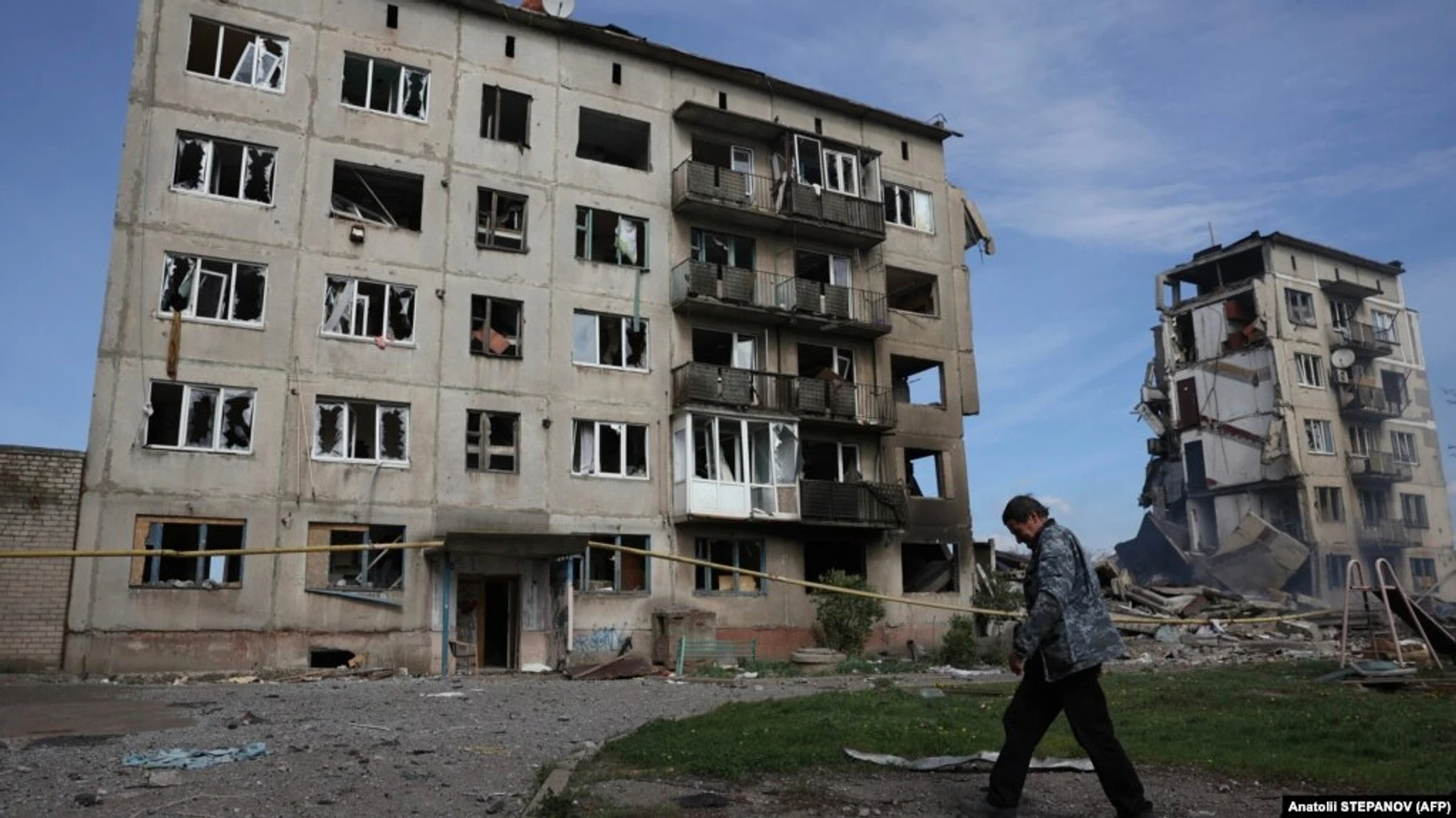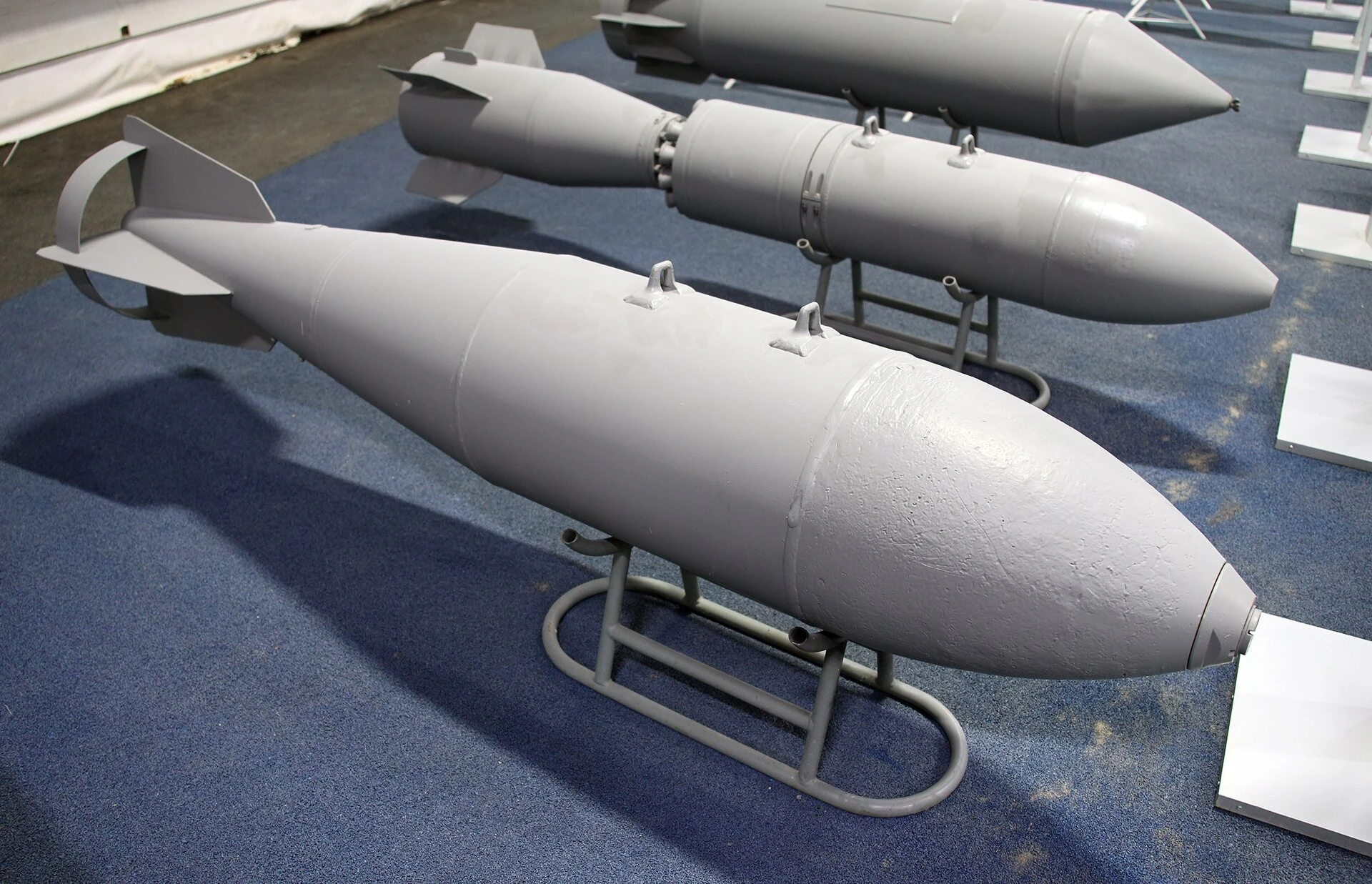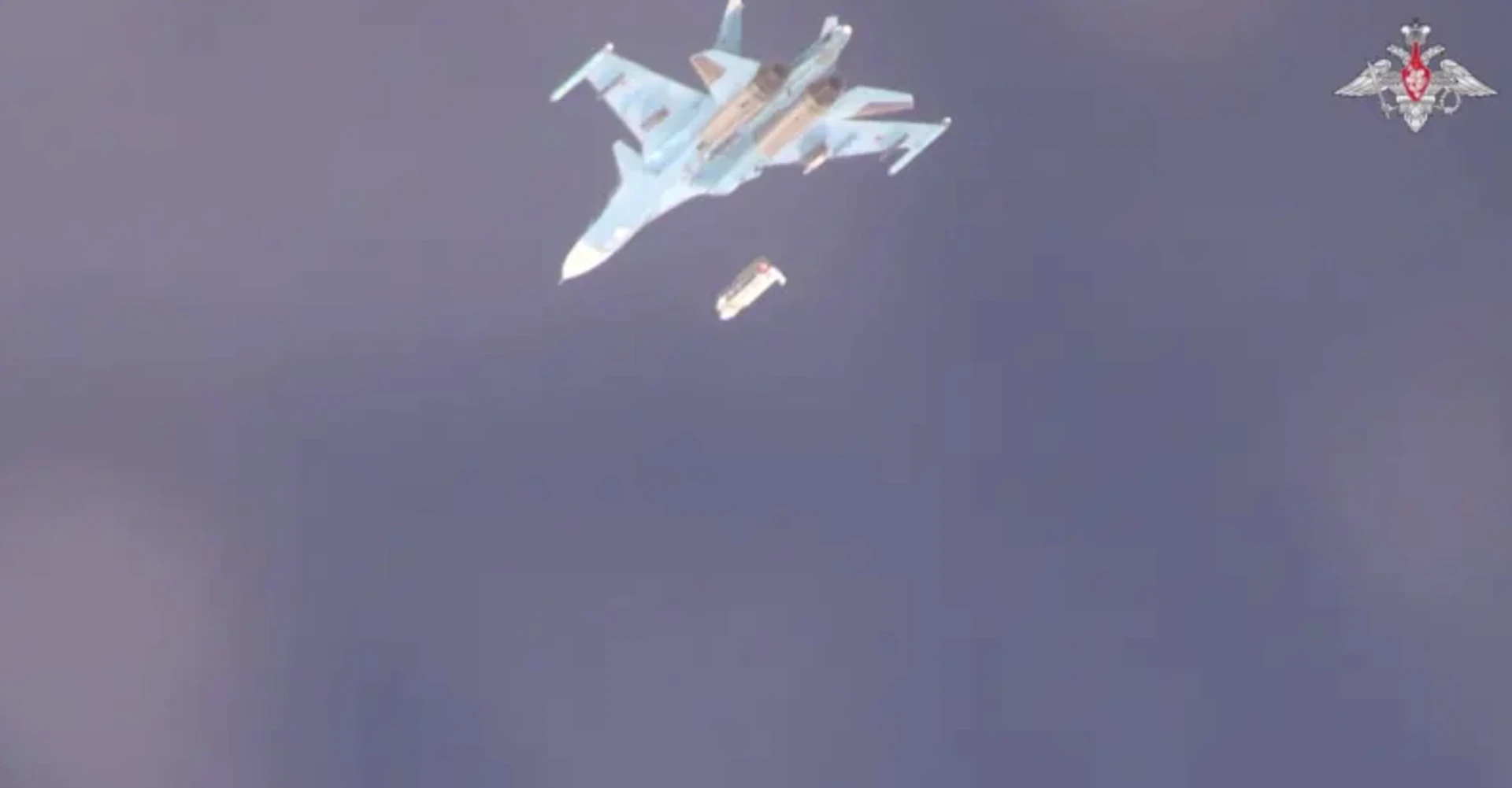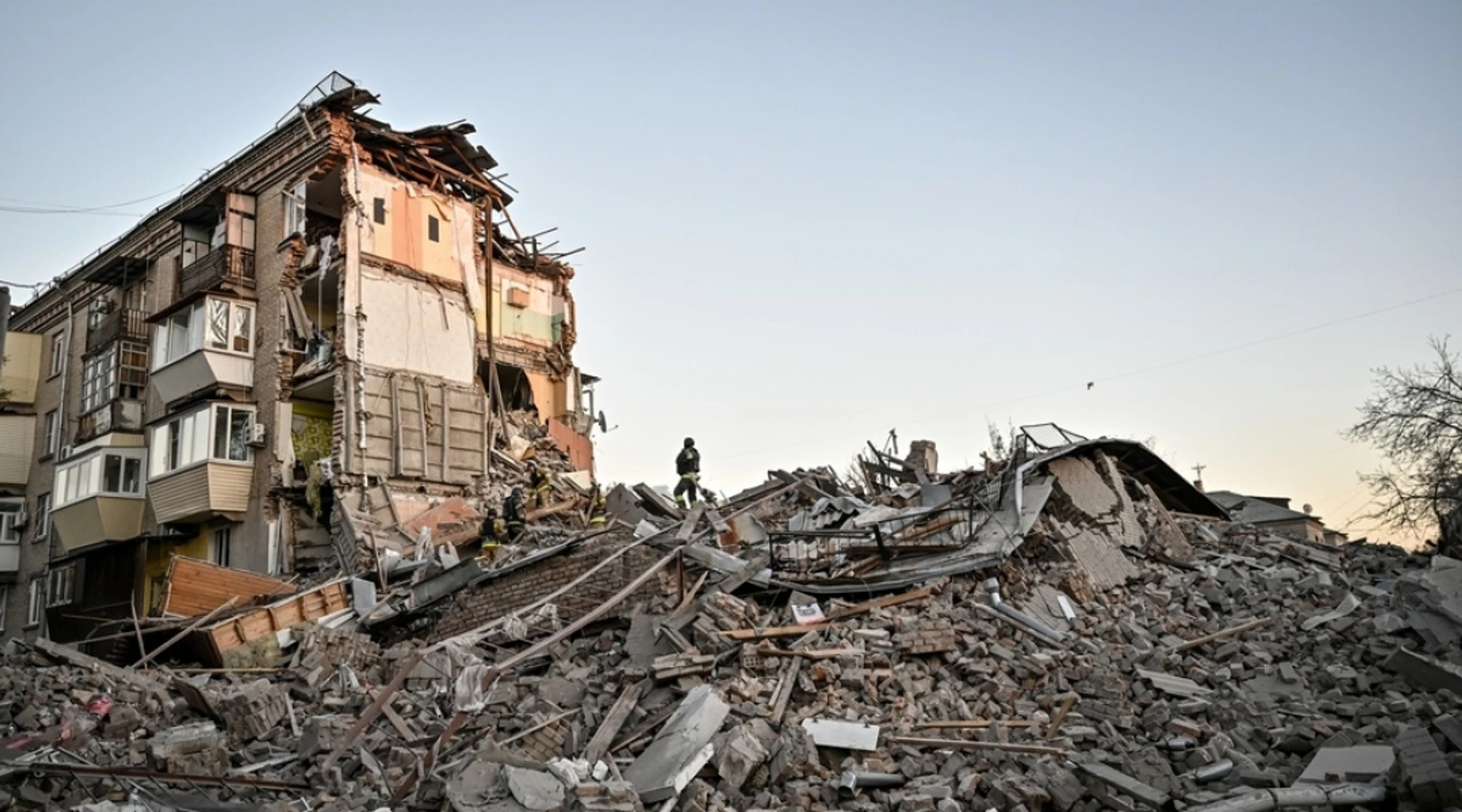Beyond the front line. What has the arrival of rocket-powered aerial bombs changed, and can Ukraine counter them?

KAB (guided aerial bomb) is a very familiar term in the armed forces. It usually refers to Russian aerial bombs fitted with a guidance and flight-planning module – that is, wings and a guidance system.
That means the bomb doesn't simply fall out of the plane; thanks to its wings it can glide forward for tens of kilometres and, using satellite links, be steered toward the point the operator programmed.
KABs are one of the biggest problems on the battlefield, because their long range means Ukrainian air defence often is not able to reach the Russian aircraft that carry them.
Recently, the Russians began using new KAB modifications against cities in the rear. The new bombs can strike targets as far as 200 km from the line of contact. So the threat is now not only to frontline areas in Ukraine's east and south but to settlements in the deep rear as well. Along the front line, that means hundreds of kilometres of additional risk.
If a munition can fly for 120 to 200 km, the zones at risk could include not only Kharkiv and Zaporizhzhia, but also Mykolaiv, Kryvyi Rih, Odesa and Poltava.
The town of Lozova in Kharkiv Oblast was the first to sound the alarm bell. After an evening strike on 18 October investigators and local authorities found a new KAB with a rocket booster – they estimate the bomb flew for roughly 120 to 130 km.
Five people were injured in the attack. This was not an isolated incident – in recent weeks, similar cases have been recorded in other regions that were traditionally considered "out of reach" for aerial bombs. Reports of strikes came from Poltava, Dnipropetrovsk, Kharkiv, Mykolaiv and Odesa oblasts.
Scenes of the strikes leave unmistakable traces: enormous craters in gardens, torn-off façades, damaged power transmission lines and damaged outbuildings.

How did an aerial bomb become a long-range semi-missile?
The working principle of a KAB is straightforward: a plane drops the munition from high altitude and at high speed – the higher and faster the aircraft, the farther the bomb will travel. Then the "little wings" and the guidance system (inertial or satellite) take over: as the bomb approaches its target it corrects its flight path.
Modern KABs are also fitted with a CRPA antenna. This specialised module protects the satellite link from electronic warfare interference.
By origin and design KABs are roughly divided into two types: those conceived from the outset as guided weapons (for example, modern UPAB-1500V) and "modernised" Soviet-era high-explosive bombs (FAB-250, FAB-500, FAB-1500, etc.) to which guidance and flight-planning modules have simply been added. The numbers in the names are approximate bomb weights in kilograms.

Russian aircraft that drop those bombs generally do not enter the range of Ukrainian air defence. They approach about 40 to 50 km from the front, launch their munitions and return to the airfield. Such ranges effectively erase the difference between frontline and some rear regions.
Andrii "Otchenash", an officer from the Rubizh brigade, told Ukrainska Pravda that aerial bomb attacks occur dozens of times a day in their sector of the front. He described strikes from personal experience:
"I've been under KAB strikes twice, if we're talking about the ones that occurred nearby. Once a KAB hit an apartment block in a frontline town where I was renting a flat. Two storeys of the neighbouring section of the building were gone. Another KAB punched a hole between the third and fourth floors and fell downwards, then detonated. A KAB crater can be over seven metres across and four metres deep. One night we nearly drove into one with our car."

The main insidious danger of KABs is that they are indiscriminate and imprecise weapons. They are launched not at a specific target so much as at a whole sector.
To put the explosive power in perspective: a typical 120-mm mortar round contains roughly 4 kg of explosive. One KAB-500 carries about 195 kg of explosives – equivalent to the simultaneous detonation of around 50 such mortar rounds. There are heavier variants, for instance, the KAB-1500, with a much greater mass. Its blast can be compared to the detonation of hundreds of artillery shells.
In October 2025 alone, the Russians dropped over 5,300 KABs on Ukraine. As the Ministry of Defence stresses, Russian forces have increased aerial bomb strikes. Over the past ten months they have used more than 40,000 such munitions to hit Ukraine. That same figure was reached over the whole of 2024.
KABs are now evolving technologically. Russian engineers have begun thinking about how to make the bomb fly even farther. The most obvious option is to add an engine to the guidance and gliding module that will accelerate the projectile toward the target.
So the distinctive feature of the new KABs that Russia has recently begun launching at cities in the rear is a jet engine.
Technically, this turns a glide bomb into a long-range semi-missile. Instead of a brief glide, the bomb now gains additional thrust, stays airborne longer, can cover much greater distances and has more room to manoeuvre.
"Unfortunately, these days 120-150 km is no longer a myth," Anatolii Khrapchynskyi, a Ukrainian Air Force reserve officer, told Ukrainska Pravda. "Those figures reflect what a modernised guided aerial bomb can achieve. The glider version without an engine can travel about 40-90 km. A solid-fuel launch booster increases the range to roughly 100-150 km. Fitting a simple cruise engine could push that to 150-200 km or more, depending on thrust and fuel capacity."


Russia has built a conveyor-belt system for the mass assembly of unified multipurpose glide modules for aerial bombs. In Korolyov, near Moscow, the Tactical Missile Armament Corporation manufactures bomb bodies and mountings and integrates the guidance electronics and a power unit — a launch booster or an engine. The result is relatively cheap, mass-produced munitions.
Support for Russia also comes from its foreign allies. Recently discovered jet-powered guided bombs have been found to contain engines of Chinese origin, according to Serhii "Flash" Beskrestnov, an expert in military radio technology:
"As expected, the new UMBP-5R jet-powered gliding munition (the one that reached Poltava) is based on a jet engine from China. We have recorded many instances of this product being used recently. As long as China trades with Russia, all global sanctions on components and assemblies are useless."


However, where are Ukraine's guided bombs? Khrapchynskyi says the bottlenecks are practical rather than technical: too few aircraft, limited logistical capacity, shortages of engines and trained pilots as well as strict integration and certification requirements for new assets on carrier aircraft.
All this slows rapid, large-scale work to create a Ukrainian mass-produced equivalent of Russian guided aerial bombs.
Will Ukraine be able to counteract Russian guided bombs?
Air defence systems cannot realistically shoot down guided bombs. In theory, they can, but not on a meaningful scale due to the vast difference in cost. A bomb costs tens of thousands of dollars, whereas air defence missiles cost millions. If Ukraine intercepted every guided bomb, it would quickly run through its missile reserves.
But that does not mean the situation is hopeless. It means the logic of defence must change. Ukraine's task is not to shoot down every guided bomb, but to make Russian aircraft launches carrying guided bombs considerably more costly and risky.
"Destroying the carrier is the number one priority," Khrapchynskyi said. "Once the carrier is destroyed, the enemy must add the cost of the aircraft to that of the guided aerial bomb and reassess the risks. Therefore, it is necessary to invest in long-range air-to-air missiles, aerial reconnaissance and strikes on airfields where aircraft are concentrated. This is far more effective than attempting to intercept each bomb individually."
It is also crucial to disrupt supply chains and target production and logistics hubs.
"An example from World War II is instructive: in 1944, the sole Hungarian factory producing engines for Tiger and Panther tanks was bombed," Yaroslav Honchar, co‑founder of the NGO Aero Rozvidka, told Ukrainska Pravda. "Engine output ceased for six months, which significantly influenced the war's course.
That is why, when we speak about mass production of guided bombs, it makes sense to look for weak links across the chain: specific components and engines, warehouses, production lines and supply routes," he adds. "A sustained disruption at any of those stages would have a far greater effect on the enemy's combat capability than isolated interceptions in the air."

On the other hand, if guided bombs continue to fly, Ukraine must reduce the effectiveness of their strikes. First, it is essential to maintain and develop warning systems. The sooner the military learns of an approaching bomb, the more likely personnel are to take cover and the attack will be rendered ineffective.
Secondly, guided bombs can be jammed by electronic warfare methods such as "spoofing". Ukrainian systems replace the satellite navigation signal, so the bomb's guidance thinks it is in a different location. That makes it fly past and ultimately miss its target.
"The enemy has begun using 16‑channel CRPA antennas on guided bombs," personnel from the 69th Separate Special Electronic Support Centre told Ukrainska Pravda. "That means jamming the navigation of these bombs requires simultaneously deploying at least 17 electronic warfare units running a specific algorithm. For a large‑scale attack, hundreds of units would be needed. Generally, it is possible to counter guided bombs even under these conditions, but doing so demands close coordination."
Thirdly, if a bomb penetrates electronic countermeasures, infrastructure must be dispersed wherever possible to reduce the effectiveness of a single guided‑bomb strike.
A truly effective strategy against guided bombs must be comprehensive, combining the destruction of carrier aircraft, strikes on production and logistics facilities, early detection and warning systems for aerial bombs, electronic warfare and the dispersal of infrastructure where possible.
"We expect an increase in long‑range strikes, where the enemy will make active use of existing Su‑34, Su‑30 and Su‑35 frontline carriers and reinforcements from operational airfields to launch huge numbers of rocket‑propelled guided bombs," Khrapchynskyi explains. "The pace could well be in the thousands per month, which is realistic given their capabilities. That will mean more strikes on energy infrastructure, logistics and some cities in the rear."
Whether this becomes a critical problem will depend on the pace of Russia's scaling and how effectively Ukraine's comprehensive countermeasures are implemented. For now, it is a threatening trend, but not a death sentence.
Translation: Myroslava Zavadska and Artem Yakymyshyn
Editing: Susan McDonald










